- 8777701917
- info@saikatinfotech.com
- Basirhat W.B
What is PoE?
Power over Ethernet (PoE) is a standard that allows Ethernet cables to transmit data and power simultaneously using a single network cable. This allows system integration and network installers to deploy powered devices in locations that lack electrical circuitry. In addition, PoE eliminates the expense of installing additional electrical wiring, requiring professional electrical installers to ensure that strict conduit regulations are followed.
PoE technology sends 10/100/1000 Mbps of data and 15W, 30W, 60W, and up to 90W of power budget to devices over Cat5e, Cat6, Cat6a. Cat7 and Cat8 Ethernet cables for a maximum distance of 100m.
PoE technology relies on the IEEE 802.3af, 802.3at, and 802.3bt standards set by the Institute of Electrical and Electronics Engineers and governs how networking equipment should operate to promote interoperability between devices.
PoE-capable devices can be power sourcing equipment (PSE), powered devices (PDs), or sometimes both. The device that transmits power is the PSE, while the device that is powered is a PD. Most PSEs are either network switches or PoE injectors intended for use with non-PoE switches.

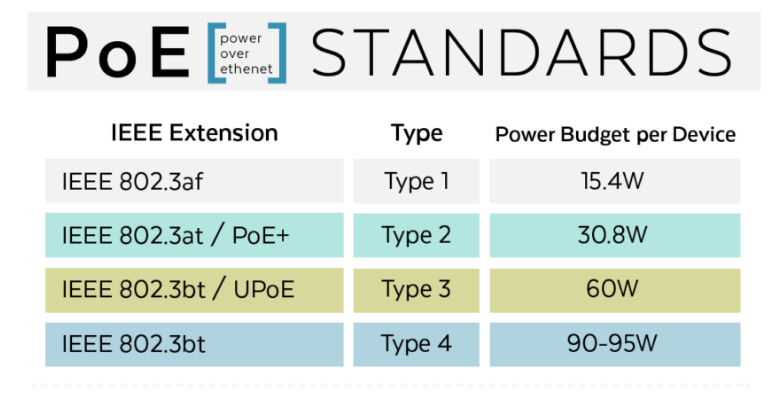

PoE installation costs are far less than installing traditional wiring, and the operating costs are far more efficient. One twisted-pair cable delivers both data and power to devices. Existing copper from legacy phone systems can also be repurposed. In addition, PoE injectors and splitters save money by allowing IT pros to combine legacy devices with newer, more efficient PoE networking components. They also enable organizations to add remote devices without having to install electrical infrastructure. Injectors and splitters are designed to provide power to and from non-PoE compliant equipment. These inexpensive units will add years to a legacy system and save thousands of dollars by bypassing the installation of electrical outlets in remote locations.
PoE devices adapt to changing environments. They can be easily moved and reconnected at the switch level and easily integrate into changing network configurations. PoE is plug-and-play. An entire network does not need to be brought down to add or subtract devices.
PoE Type 3 voltages are typically less than 60V, and Type 4 is less than 90V. Conduits and metal cladding are not required. Fewer steps and hazards and the straightforward use of one Ethernet cable remove the need for a licensed electrician.
PoE technology is perfect for data collection. For example, analytics software can help facilities groups to determine when an area is occupied and when LED lighting and HVAC components may be turned off. As a result, operational costs can be much lower based on actual usage.
Because of two-way data capabilities, LED lighting systems can be programmed to follow the spectrum and frequencies found in nature. As a result, employees can enjoy greater health, alertness, creativity, collaborative opportunities, and a sense of well-being while on the job.
The limitations are few but should be taken into account when adopting for the first time:
PoE can transmit 100 meters from the switch or hub to the Network interface controller (NIC), regardless of where the power is injected. The limitation is not the power; the Ethernet cabling standards limit the total length of cabling to 100m, the furthest distance a PoE switch can transmit simple data over Ethernet. A PoE Ethernet extender, however, can lengthen that span up to 4,000 feet. Extenders allow centralized control across a wide area for networks spanning enterprises, campuses, and large retail operations like shopping malls.
Legacy devices (those that are not PoE compliant) require either an injector or a splitter. PoE delivers power AND data over one cable and, therefore, one input. Legacy devices receive data and power separately.
Here’s how they work:
When purchasing, administrators want to be sure the maximum power budget of a switch is sufficient for the devices it supports. Identify the manufacturer’s power spec/budget per port to know if the end device will receive the necessary power through that switch.
A power budget is the total amount of power a device can send through an Ethernet cable.
PoE devices supply power according to the device IEEE 802.3 standard generation. The life-cycle generation is indicated by the extension: “af”, “at” (PoE+),or “bt” (PoE++ or UPoE). The following chart provides a side-by-side comparison of the maximum power each PoE Type delivers at the port level.
A PoE injector connects your PoE-enabled network device to a non-PoE LAN switch port.
More specifically, a PoE injector can be used to connect a wireless access point, IP phone, network camera or any IEEE 802.3af/at-powered device (PD) to a network switch. Using a PoE injector avoids the need to run AC power lines for your wireless access point, network camera or IP phone, because you use the existing LAN cabling to deliver both DC power as well as data.
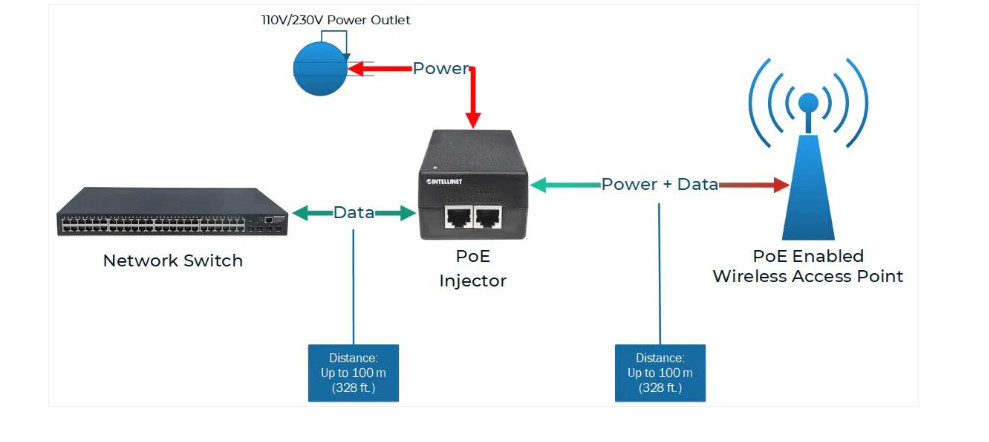
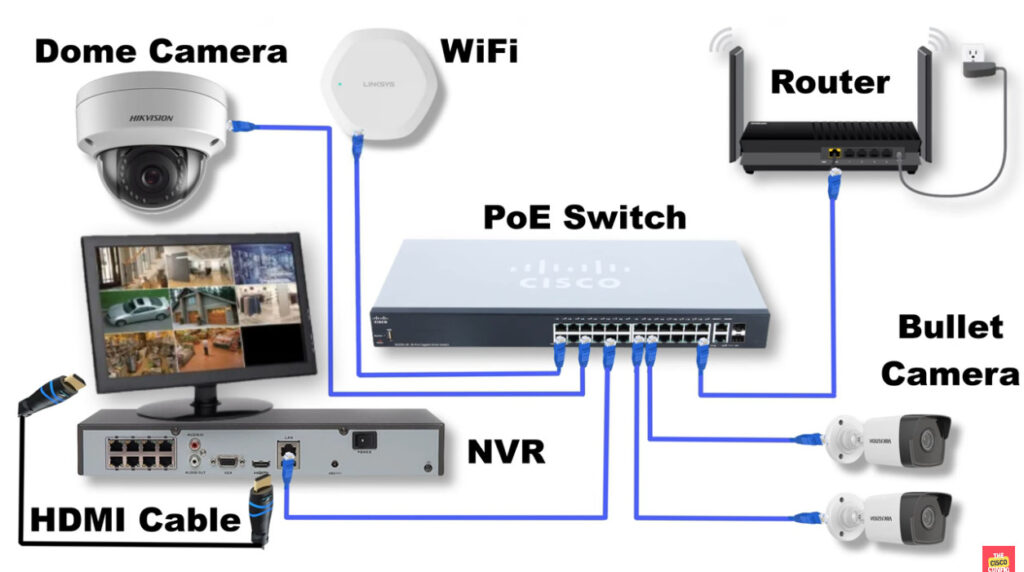
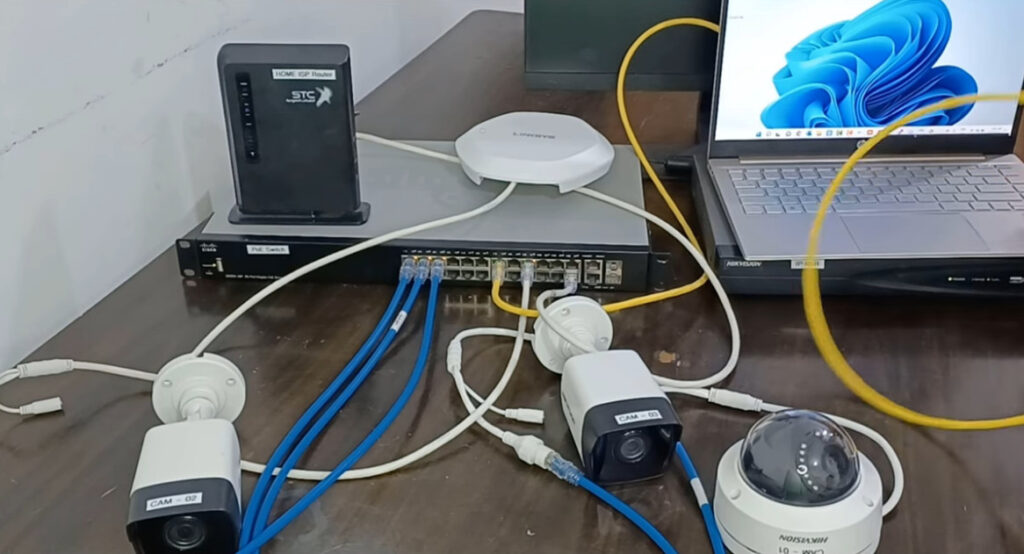
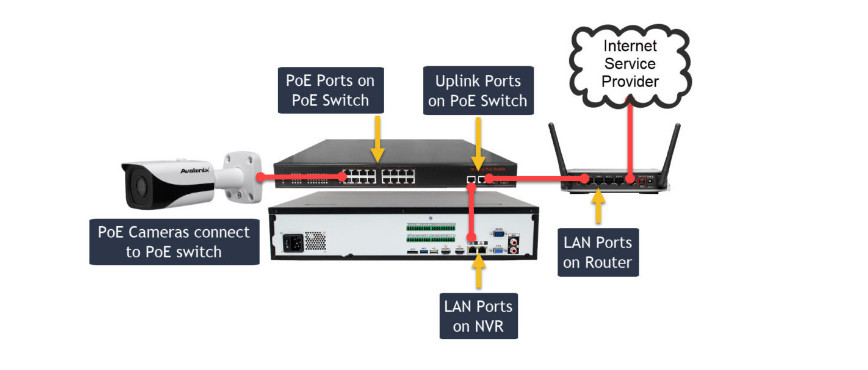
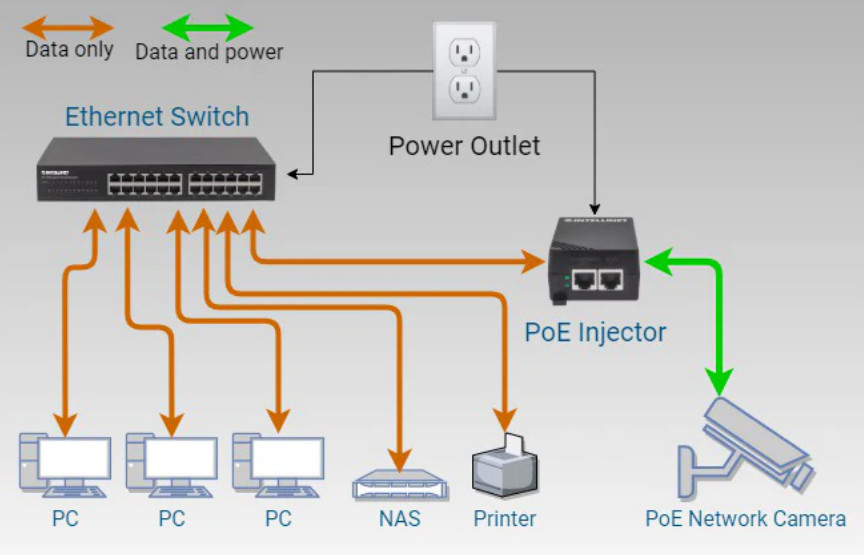


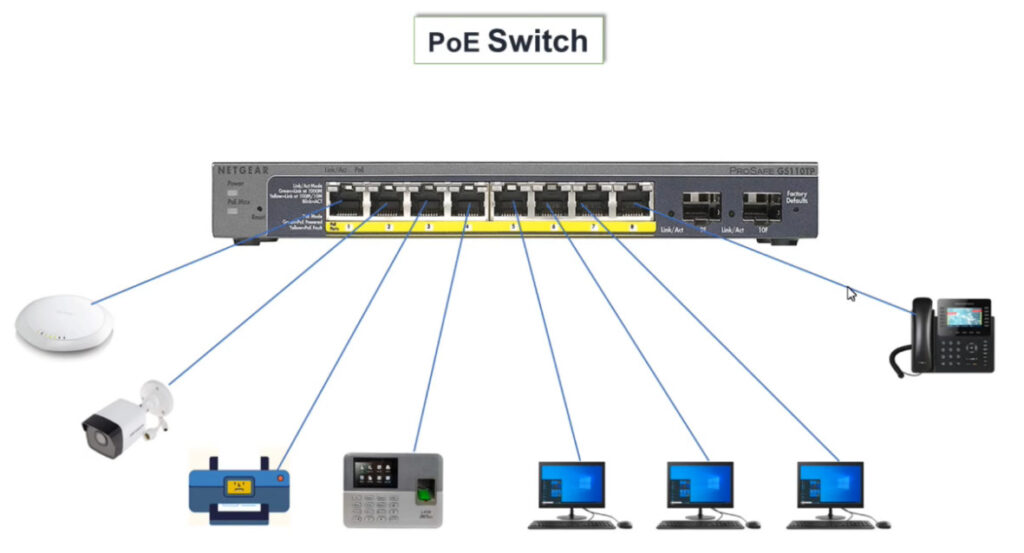
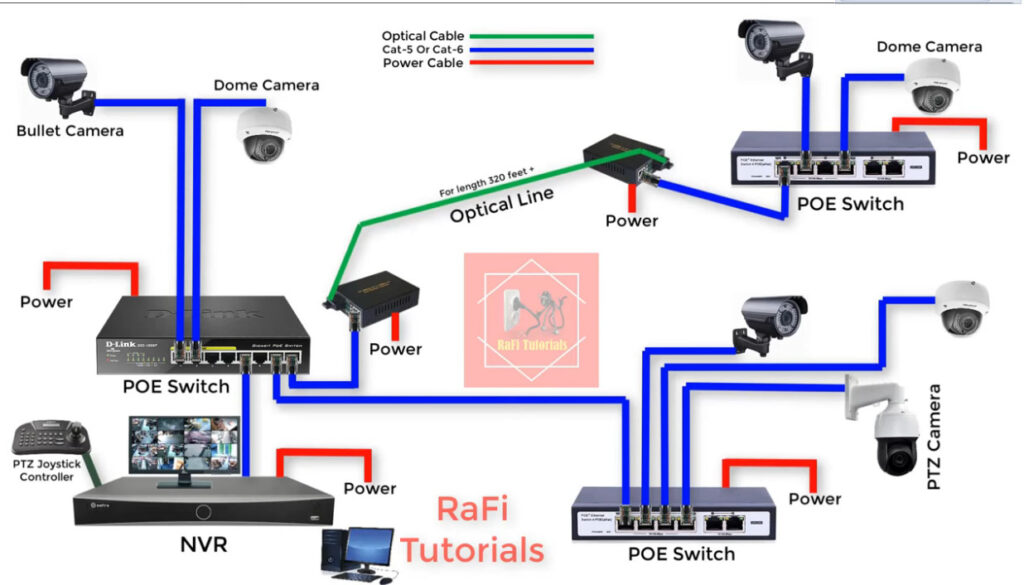
A PoE switch (Power over Ethernet switch) is a type of network switch that provides both data connectivity and electrical power to devices over the same Ethernet cable. This capability allows you to connect and power devices like IP cameras, VoIP phones, wireless access points (APs), networked sensors, and other PoE-enabled devices without needing a separate power source or outlet for each device.
PoE delivers power and data over standard Ethernet cables (typically Cat5e or Cat6) using a technique where the power is transmitted on the unused pairs of wires within the cable, allowing the devices to receive both data and power through the same cable.
There are two main standards for PoE, which define how much power can be delivered over the Ethernet cable:
IEEE 802.3af (PoE):
IEEE 802.3at (PoE+ or PoE Plus):
IEEE 802.3bt (PoE++ or 4PPoE):
Simplified Cabling: PoE switches allow you to use just a single Ethernet cable for both power and data. This reduces the need for extra power cables and outlets, simplifying installation and management.
Cost Savings: By using PoE, you don’t need to install separate electrical outlets near each device, which can save costs, especially in locations where it’s hard to get power (like ceilings or outdoor environments).
Centralized Power Management: Power for PoE devices is provided directly from the switch. This makes it easier to manage power distribution, and you can often monitor power usage and status through the switch’s management interface.
Scalability: Many PoE switches support multiple PoE ports, allowing you to power several devices from a single switch, which is ideal for growing network infrastructures.
Safety Features: PoE switches often include power management features, such as auto-discovery of PoE devices and protections against overcurrent or short circuits, ensuring that devices are safely powered.
Unmanaged PoE Switches: These are plug-and-play switches that don’t require configuration. They are ideal for simple setups where advanced features like VLANs, QoS, or network monitoring aren’t needed.
Managed PoE Switches: These switches offer advanced features, such as VLAN support, traffic prioritization (QoS), power management, and remote monitoring, making them suitable for larger or more complex networks.
PoE Injector: If you have a non-PoE switch but need to provide power to a PoE device, you can use a PoE injector. It sits between the non-PoE switch and the device, adding power to the Ethernet cable.
In summary, a PoE switch is a convenient and cost-effective way to provide both power and data connectivity to networked devices, streamlining the installation and maintenance of networked devices like cameras, phones, and wireless access points.